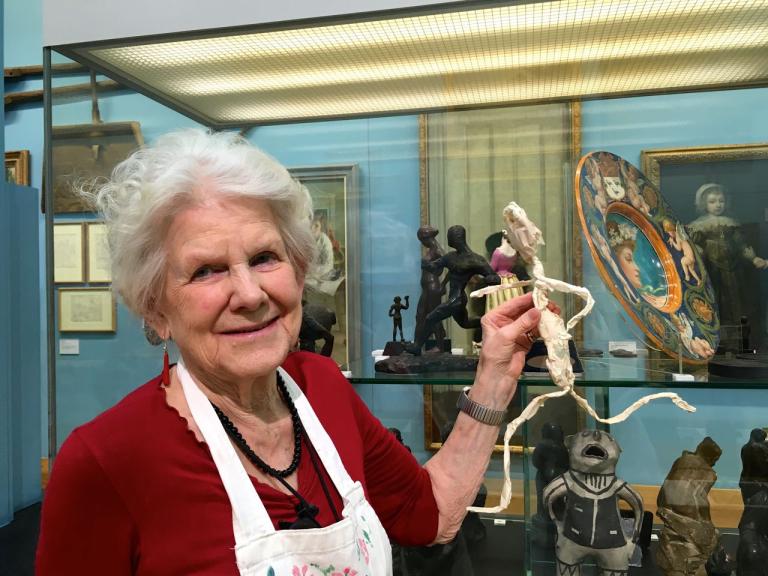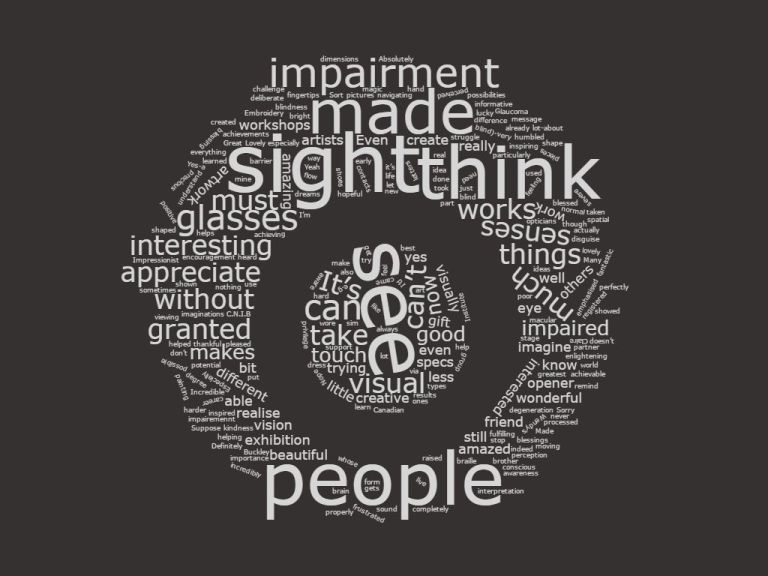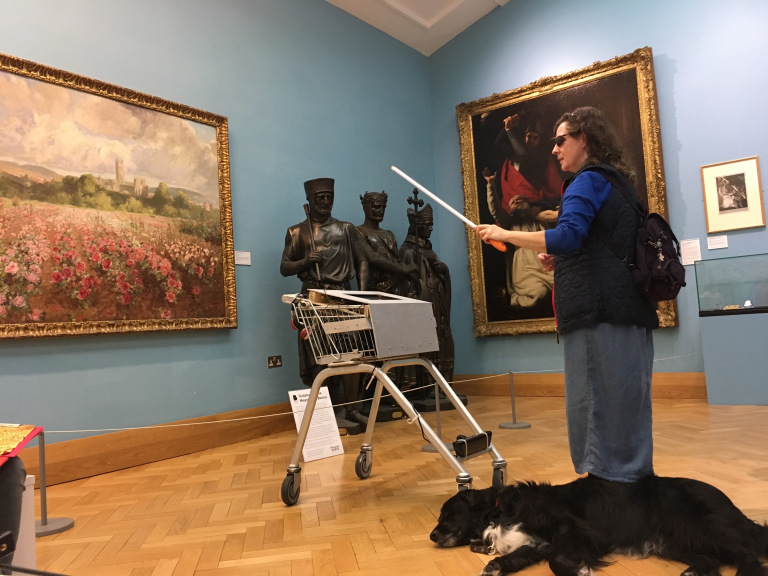
Sensing Culture
This story shares how The Beaney House of Art and Knowledge are working together with partners and their local visually impaired community to enable more meaningful access to creative and cultural experiences to boost wellbeing, raise awareness and create a more inclusive space.
” Being able to feel around the exhibit and get ideas from touch – this made a big difference for me. Because you can’t see you do need to feel it and it’s surprising how much you remember from feeling it.”
Sensing Culture Participant
The free Sensing Culture creative group for adults with sight loss meets monthly at the Beaney. It began as part of an HLF-funded RNIB project (Sensing Culture), also involving museums in Oxford, Portsmouth and Brighton – funding for the project ended in spring 2018, but there is a clear legacy for the partners.
Beaney participants enjoy handling objects from the collections, tactile tours, and creating artwork. The artwork has led to exhibitions in 2017 and 2018 in the Beaney Front Room gallery (which showcases work by local artists and community groups as part of the health and wellbeing programme). The 2018 exhibition includes work by 2 professional visually impaired (VI) artists who had been guest facilitators in 2017 workshops. The exhibitions not only show off the amazing work done by the group, but also give our visitors the chance to explore visual impairment in its various forms, and feedback via the questionnaire Have You Got 20:20 Vision? (image below) as well as celebrate the successes of others.

In the past 2 years we have also developed a highly experienced team of volunteers who work across all our health and wellbeing groups, and who have benefited from additional training in VI issues.

In addition, a separate music strand has been developed, working with VI primary school children, in partnership with a local secondary school. This has resulted in an Arts Award for the primary pupils, live public performances in the Beaney and the development of the Beaney Butterfly Music Machine which brings paintings in the Beaney to audio-life via the arm movements of participants.

Participants also contribute as an informal focus group to help with development of greater accessibility at the Beaney for VI visitors. Informally, as well as in formal evaluations, group members regularly tell us of the empowerment and sense of ownership of the building that they have gained.
” It has ‘opened our eyes’ to seeing what’s available for visually impaired people “
Sensing Culture Participant
The Beaney is now working on a new access offer (advised by the group) which includes: a tactile trail; an increase in objects (such as the Epstein Red Dean) which are included in the Touchable Beaney umbrella; the commissioning of tactile replicas of precious objects on display; and a revolutionary iBeacon app to guide visually impaired visitors around the Beaney highlights using audio description and enhanced images. The latter meets the particular challenge that people with visual impairment won’t necessarily wish to spend much of their time in groups.
To find out more about the overarching Sensing Culture programme click here
70 Stories for 70 Years
These stories represent personal experiences of the impact of creativity, culture and the arts on health and wellbeing. They have been collected by the Culture, Health & Wellbeing Alliance (CHWA) to celebrate the 70thAnniversary of the NHS in 2018.
If you have a story you would like to share, please do get in contact at [email protected].
We are publishing these stories as a collection on the new CHWA website, and will be promoting them using social media from the end of 2018 leading up to the first CHWA Annual Conference in March 2019.
